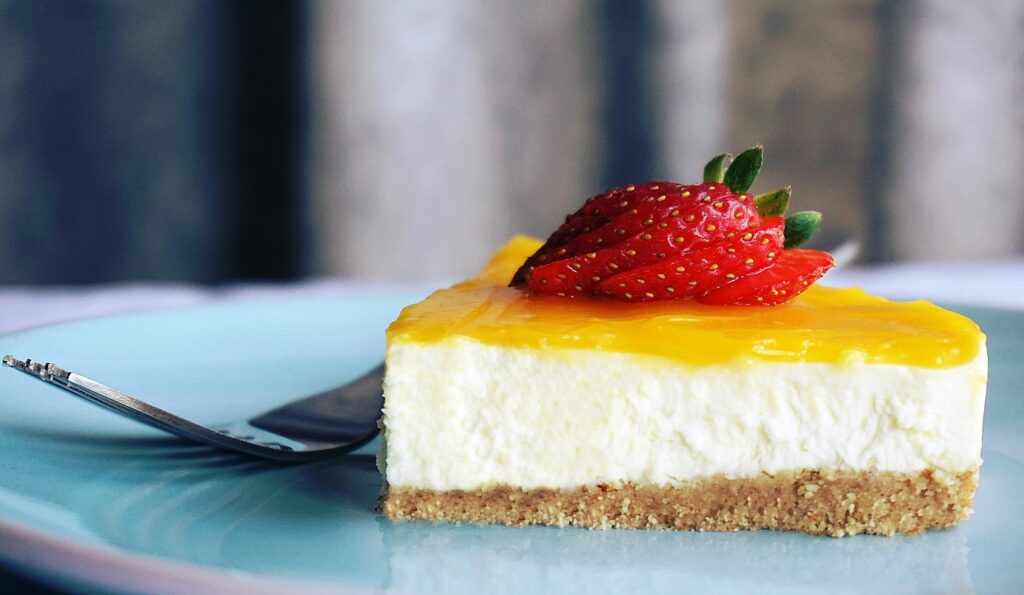The Delectable History of Cheese cake: From Ancient Roots to Modern Delight
Cheesecake, with its creamy texture and versatile flavors, is one of the world’s most beloved desserts. Its history, however, is as rich and layered as the dessert itself, spanning thousands of years, continents, and cultures.
Ancient Origins: The Birth of a Classic
Cheesecake’s story begins in ancient Greece. Historians believe the earliest versions date back to around 2,000 BCE. Archaeologists have discovered cheese molds on the Greek island of Samos, suggesting that early cheesecakes were likely simple mixtures of cheese, flour, and honey.
In ancient Greece, cheesecake was considered a good source of energy and was often served to athletes during the first Olympic Games in 776 BCE. It was also used as a wedding dessert, symbolizing prosperity and celebration.
Roman Influence
When the Romans conquered Greece, they adopted and adapted the recipe, calling it placenta or libum. Roman cheesecakes were more refined, often baked on a pastry base and infused with local ingredients like nuts and dried fruits. These recipes spread across the Roman Empire, leaving a lasting culinary legacy.
Medieval Europe: Transforming Traditions
During the Middle Ages, cheesecake evolved further as different regions added their own touches. In England, for instance, cheesecakes often incorporated curd cheese and spices, while in Italy, ricotta cheese became a popular choice. The dessert was typically sweetened with honey or dried fruits, as sugar was a rare and expensive commodity.
The New World: Cheesecake in America
Cheesecake crossed the Atlantic with European settlers. By the 18th century, cream cheese—a distinctly American invention—became the star ingredient, transforming the dessert into the rich and creamy treat we know today. In 1872, a New York dairyman named William Lawrence accidentally invented modern cream cheese while attempting to replicate a French cheese called Neufchâtel.
This innovation led to the birth of the iconic New York-style cheesecake, characterized by its dense, velvety texture and a graham cracker crust. The recipe, popularized by Jewish delicatessens in New York City, became synonymous with indulgence and urban sophistication.
Global Variations: A World of Cheesecake
Today, cheesecake comes in countless variations, reflecting the diverse cultures that have embraced it. Some examples include:
- Japanese Cheesecake: Light, fluffy, and souffle-like, it incorporates whipped egg whites for an airy texture.
- Italian Cheesecake: Often made with ricotta or mascarpone cheese, giving it a slightly tangy and creamy profile.
- German Käsekuchen: Uses quark cheese and has a more custard-like texture.
- No-Bake Cheesecake: A modern favorite that requires no baking, using gelatin or whipped cream for firmness.
Cheesecake in Pop Culture
Cheesecake’s fame extends beyond the kitchen. It has appeared in movies, TV shows, and literature, often symbolizing indulgence or comfort. Its adaptability has made it a staple for celebrations, from birthdays to weddings, and even as a trendy dessert at upscale restaurants.
The Cheesecake Renaissance
In recent years, cheesecake has undergone a renaissance. Artisanal bakeries experiment with flavors like matcha, salted caramel, and even savory ingredients. Mini cheesecakes, cheesecake bars, and vegan cheesecakes have also gained popularity, catering to modern tastes and dietary preferences.
The Enduring Legacy
Cheesecake’s long history is a testament to its universal appeal. From ancient Greek athletes to modern dessert lovers, it has evolved while maintaining its core essence: a dessert that celebrates the creamy, tangy goodness of cheese in every bite.
Next time you savor a slice of cheesecake, consider its journey—a timeless classic that has delighted taste buds for millennia.🎂

